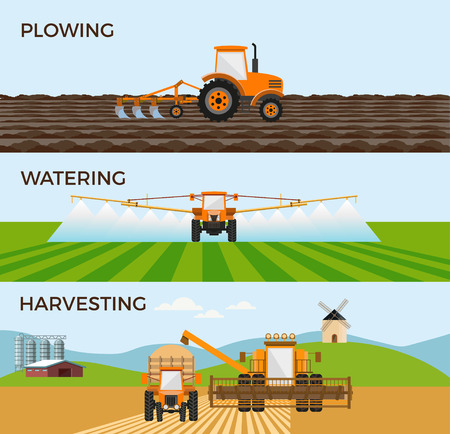Introduction to Smart Plant Monitoring Systems
If you’ve ever wondered whether your houseplants are getting the right amount of water, sunlight, or nutrients, youre not alone. That’s where smart plant monitoring systems come in. These handy devices are designed to take the guesswork out of plant care by using sensors and app-based technologies to track your plant’s environment and needs. Whether youre growing herbs in your kitchen, succulents on a sunny windowsill, or keeping a full garden in your backyard, smart plant monitors help you stay connected with your plants—literally.
What Are Smart Plant Monitoring Systems?
Smart plant monitoring systems are tech gadgets equipped with various sensors that measure key environmental factors such as soil moisture, light levels, temperature, and sometimes even nutrient levels. These devices usually connect to your smartphone via Bluetooth or Wi-Fi, providing real-time data and alerts through a companion app. Some even include AI-driven suggestions based on the type of plant you’re caring for.
Common Features Found in Most Devices
| Feature | Description |
|---|---|
| Soil Moisture Sensor | Measures how wet or dry the soil is to prevent over- or under-watering |
| Light Sensor | Detects the amount of sunlight your plant is receiving |
| Temperature Monitor | Keeps track of surrounding temperature to ensure its suitable for your plant |
| Nutrient Sensor (optional) | Analyzes soil fertility and provides fertilization recommendations |
| App Integration | Sends data to your phone for easy tracking and alerts |
Why Theyre Becoming Popular in the U.S.
In recent years, more people across the U.S. have taken up indoor gardening and houseplant care as hobbies, especially during extended periods at home. With busy lifestyles and varying knowledge about plant care, smart plant monitors have become essential tools for both beginners and seasoned gardeners. They offer peace of mind by making it easier to understand what your plants need and when they need it. Plus, with many Americans embracing smart home technology, adding a plant monitor just makes sense as part of a connected lifestyle.
2. Key Features to Look for in a Smart Plant Monitor
If youre trying to choose the best smart plant monitoring system, its important to know what features actually matter. Not all plant monitors are created equal—some are packed with high-tech tools, while others stick to the basics. Heres a breakdown of the most essential features you should look for when shopping for one.
Soil Moisture Sensors
This is one of the most critical components in any smart plant monitor. Soil moisture sensors help you know exactly when your plant needs water, taking out the guesswork and helping prevent over- or under-watering. Some advanced systems even alert you on your phone when your plant is thirsty.
Wi-Fi Connectivity
A smart monitor isn’t very smart without Wi-Fi. With Wi-Fi connectivity, your device can send real-time updates straight to your smartphone or tablet, no matter where you are. This is especially useful if you travel often or have multiple plants spread throughout your home or garden.
Smartphone Integration
Most modern systems come with their own apps that sync with iOS or Android devices. These apps display important stats like moisture levels, sunlight exposure, and temperature. Some even offer personalized care tips based on the type of plant youre growing.
Sunlight Tracking
Your plants need the right amount of light to thrive. Sunlight tracking helps you understand how much direct or indirect sunlight your plant receives throughout the day. With this data, you can move your plant to a better location if needed.
Feature Comparison Table
| Feature | Description | Why It Matters |
|---|---|---|
| Soil Moisture Sensor | Senses when soil is too dry or wet | Keeps watering accurate and timely |
| Wi-Fi Connectivity | Sends data wirelessly to your devices | You get updates anytime, anywhere |
| Smartphone App Integration | User-friendly app interface for tracking plant health | Makes it easy to monitor multiple plants at once |
| Sunlight Tracking | Keeps tabs on how much sun your plant gets daily | You can adjust placement for optimal growth |
Selecting a system with these core features will make a big difference in how well your plants grow—and how easy it is for you to take care of them. Whether youre growing herbs on a windowsill or managing a full indoor jungle, having the right tools can turn anyone into a confident plant parent.

3. Top Smart Plant Monitoring Systems on the Market
Choosing the best smart plant monitoring system can be overwhelming with so many options out there. To help you decide, we’ve reviewed some of the most popular and reliable products available in the U.S. These devices vary in features, pricing, and ease of use. Below is a detailed comparison to help you find the right fit for your indoor or outdoor garden.
Popular Smart Plant Monitors Compared
| Product | Main Features | Pros | Cons | Price Range (USD) |
|---|---|---|---|---|
| PlantLink by Scotts | Soil moisture tracking, app alerts, outdoor-friendly | Easy setup, good for beginners, weather-resistant | No light or temperature sensor, limited app functions | $60 – $80 |
| Xiaomi Mi Flora Monitor | Light, moisture, temperature, and fertility sensors | Affordable, highly accurate sensors, Bluetooth enabled | No Wi-Fi support, app interface may require translation | $25 – $35 |
| Parrot Flower Power | 4-in-1 sensor: sunlight, temp, moisture, fertilizer levels | Stylish design, wide plant database, iOS and Android compatible | Battery life could be better, app not updated frequently | $40 – $70 |
| AeroGarden Bounty Elite with Wi-Fi | Smart hydroponic system with built-in sensors and lighting | All-in-one solution for indoor gardening, Alexa compatible | Expensive, not ideal for traditional soil-based plants | $250 – $350 |
| Edyn Garden Sensor (Discontinued but still available) | Sunlight, humidity, moisture and nutrient sensors; solar-powered | Sustainable energy use, real-time updates via Wi-Fi | No longer officially supported, limited availability | $50 – $90 (used or refurbished) |
What to Consider When Choosing a System
If youre shopping for a smart plant monitor in the U.S., think about where youll be using it—indoors or outdoors—and whether you prefer something simple or fully integrated with other smart home devices like Alexa or Google Home. Also consider:
- Connectivity: Do you want Bluetooth-only or Wi-Fi-enabled devices?
- Sensors: Some only measure moisture; others include light and temperature.
- User Interface: Apps vary greatly in ease-of-use and language settings.
- Budget: Prices range widely based on features and brand.
User Tips for Best Results:
- Place sensors close to plant roots for accurate readings.
- Keep firmware and apps updated to ensure compatibility.
- If using Bluetooth models, stay within range (usually about 30 feet).
Selecting the right smart plant monitoring system depends on your gardening goals—whether youre growing herbs on your kitchen counter or managing a backyard vegetable patch. Each product has its strengths and drawbacks, so match your needs with what each system offers.
4. User Experience and App Usability
When choosing a smart plant monitoring system, the app experience can make or break your gardening journey. A well-designed app should be easy to set up, display accurate data, and offer a user-friendly interface that even beginners can navigate.
Setup Ease
Most smart plant monitors come with a companion app that walks you through the initial setup. Some systems are plug-and-play, while others may require syncing with Wi-Fi or Bluetooth, creating an account, and selecting plant types. Heres a quick comparison of how different systems handle setup:
| Brand | Setup Time | Difficulty Level | Account Required |
|---|---|---|---|
| PlantSnap Smart Monitor | 5-10 minutes | Easy | Yes |
| Parrot Flower Power | 10-15 minutes | Moderate | Yes |
| Xiaomi Mi Flora Sensor | 5 minutes | Very Easy | No |
Data Accuracy & Feedback
The main point of using a smart monitor is to get real-time insights into your plant’s needs. Most apps provide data on soil moisture, light intensity, temperature, and sometimes even nutrient levels. However, not all apps interpret this data clearly or accurately. Some offer actionable suggestions like “Water your plant today,” while others just show raw numbers without context.
Top Features to Look For:
- Real-time alerts: Notifications when your plant needs attention.
- Historical tracking: Graphs and charts showing trends over time.
- Plant database integration: Tips tailored to your specific plant species.
User Interface (UI) Design
A cluttered or outdated design can make even the best tech hard to use. Most users prefer clean layouts with big buttons, intuitive icons, and simple language. Apps like Planta and Greg have set high standards by focusing on ease of use and personalization options.
User Ratings Overview:
| App Name | User Rating (App Store) | User Comments Highlight |
|---|---|---|
| Planta | 4.8/5 | “Super easy to use and very informative!” |
| Xiaomi Mi Home App | 4.2/5 | “Great for quick updates but could use better visuals.” |
| Parrot Flower Power App | 3.9/5 | “Useful but feels a bit dated.” |
Your overall experience with a smart plant monitoring system depends heavily on how much you enjoy using its app. Whether youre a tech-savvy gardener or just starting out, finding an app that feels natural to use will help you stay consistent—and keep your plants happy.
5. Which Smart Monitor is Best for Your Needs?
Choosing the right smart plant monitoring system depends on a few key factors: your specific plant care needs, whether youre growing indoors or outdoors, your budget, and your level of gardening experience. Heres a breakdown to help you find the best fit.
🌿 Recommendations Based on Plant Care Needs
If youre caring for moisture-sensitive plants like orchids or succulents, youll want a monitor with highly accurate soil moisture sensors. For light-loving plants such as herbs and vegetables, a device that tracks sunlight exposure is essential.
| Plant Type | Recommended Features | Top Monitor Choice |
|---|---|---|
| Succulents & Cacti | Soil moisture accuracy, low maintenance alerts | Xiaomi Mi Flora Sensor |
| Herbs & Leafy Greens | Light tracking, temperature sensor | Parrot Flower Power |
| Orchids & Tropical Plants | Humidity monitoring, temperature alerts | PlantLink by Scotts |
🏡 Indoor vs. Outdoor Use
Some monitors are built for the controlled environment of your home, while others can withstand outdoor elements like rain and UV rays. Be sure to choose one that fits where your plants live.
| Environment | Best Features to Look For | Suggested Product |
|---|---|---|
| Indoor Gardens | Bluetooth connectivity, compact design | AeroGarden Smart Garden System |
| Outdoor Yards & Patios | Weather resistance, long-range wireless signal | BloomSky Weather Station + Soil Sensor Add-on |
💰 Budget Considerations
You don’t need to spend a fortune to get helpful data about your plants. Here’s a quick guide based on price ranges:
| Budget Range | Features You Can Expect | Product Example |
|---|---|---|
| $20–$50 | Basic soil moisture and light sensors, app support via Bluetooth | Xiaomi Mi Flora Sensor |
| $50–$100 | Adds temperature/humidity tracking, better app integration | PlantLink by Scotts |
| $100+ | Wi-Fi enabled, weather-resistant, cloud data storage, advanced analytics | BloomSky with Smart Garden Hub Integration |
👩🌾 Gardening Experience Level
Beginner Gardeners:
If youre just starting out, look for systems with simple apps and clear notifications. Devices like the Parrot Flower Power provide actionable advice in easy-to-understand language.
Intermediate Gardeners:
You might appreciate more customization options and detailed data charts. Products like PlantLink give flexible controls without overwhelming you.
Experienced Gardeners:
If youre ready to dive into real-time metrics and automation capabilities, go for premium systems like BloomSky or Edyn Garden Sensor that connect with smart irrigation tools and offer environmental forecasting.
No matter your skill level or plant type, there’s a smart monitor that can make caring for your plants easier and more effective.

